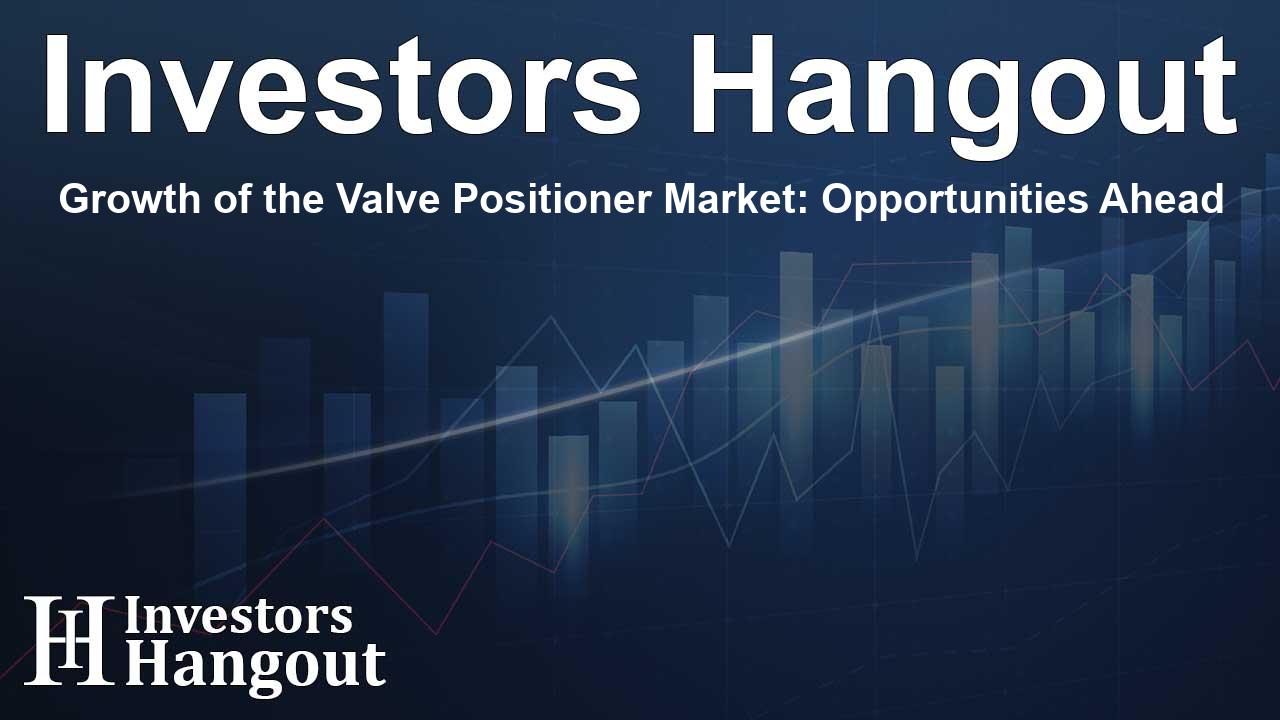Growth of the Valve Positioner Market: Opportunities Ahead

Overview of the Valve Positioner Market
The valve positioner market is on an exciting trajectory, expected to expand from USD 1.9 Billion in 2024 to a noteworthy USD 3.3 Billion by 2034. This remarkable growth is propelled by advancements in technology, the rising trend of industrial automation, and a pressing need for effective process control. With a compound annual growth rate (CAGR) of 5.5%, the market is becoming increasingly vital to various sectors.
Key Factors Influencing Market Growth
Several factors are contributing to the growth of the valve positioner market. Firstly, there is a heightened demand for accurate flow control across industries, including oil and gas, chemical processing, and water treatment. This demand has led to the wider adoption of valve positioners which play a critical role in assuring the efficiency and precision of valves during operations.
The Importance of Automation
The emphasis on automation within manufacturing processes is another major driver. Industries now recognize that automating operations can significantly improve productivity and minimize human error. Valve positioners, particularly those equipped with smart technologies and Internet of Things (IoT) capabilities, facilitate remote monitoring and predictive maintenance, which further enhances the efficiency of industrial operations.
Regional Insights into Market Dynamics
The valve positioner market exhibits diverse growth depending on geographical regions. For instance, North America, particularly the USA, stands out as the largest market contributor due to its robust industrial landscape. The combination of advancements in the power generation and oil and gas sectors, along with substantial investments in automation technologies, creates a favorable environment for valve positioner adoption.
Key Markets by Region
China is another key player, primarily driven by rapid industrialization and infrastructural expansion. The demand for reliable process control technologies in its large-scale manufacturing plants continues to escalate. In contrast, regions like South Korea and Japan are leveraging their advancements in precision control and automation technologies to enhance their market positions.
Challenges and Technological Trends
Despite the promising outlook, there are challenges to consider. High initial costs associated with advanced valve positioners and the complexities involved in integrating these technologies with legacy systems can pose significant hurdles. However, these challenges are being mitigated by ongoing technological advancements, resulting in the development of more cost-effective solutions.
Technological Innovations in the Market
The market is witnessing a surge in innovations aimed at enhancing the functionality of valve positioners. Smart valve mechanisms and their compatibility with industrial IoT platforms are opening new avenues for process optimization. These innovations allow for greater connectivity and data analytics, leading to improved operational efficiencies.
Future Outlook and Key Players
Looking ahead, leading companies in the valve positioner space, such as ABB Ltd., Emerson Electric Co., Flowserve Corporation, Schneider Electric SE, and Azbil Corporation, are continuously enhancing their product offerings. By prioritizing the integration of smart technologies and sustainability into their designs, these companies are well-positioned to capture future market opportunities.
Importance of Sustainability
Alongside technological advancements, there’s a growing trend towards developing eco-friendly and energy-efficient valve positioners. Manufacturers are increasingly aware of their environmental impact, prompting the transition to greener alternatives that comply with global sustainability objectives.
Frequently Asked Questions
What is the projected growth rate of the valve positioner market?
The valve positioner market is projected to grow at a CAGR of 5.5%, reaching USD 3.3 Billion by 2034.
Why is automation important in the valve positioner market?
Automation enhances productivity, reduces manual errors, and ensures precise flow control in industrial operations.
Which regions are leading the valve positioner market growth?
North America, especially the USA, is a major contributor, followed by China, South Korea, and Japan.
What challenges does the valve positioner market face?
High initial costs and integration complexities with existing systems are notable challenges in the market.
How are companies addressing sustainability in valve positioners?
Manufacturers are developing energy-efficient and eco-friendly valve positioners to align with global sustainability goals.
About Investors Hangout
Investors Hangout is a leading online stock forum for financial discussion and learning, offering a wide range of free tools and resources. It draws in traders of all levels, who exchange market knowledge, investigate trading tactics, and keep an eye on industry developments in real time. Featuring financial articles, stock message boards, quotes, charts, company profiles, and live news updates. Through cooperative learning and a wealth of informational resources, it helps users from novices creating their first portfolios to experts honing their techniques. Join Investors Hangout today: https://investorshangout.com/
Disclaimer: The content of this article is solely for general informational purposes only; it does not represent legal, financial, or investment advice. Investors Hangout does not offer financial advice; the author is not a licensed financial advisor. Consult a qualified advisor before making any financial or investment decisions based on this article. The author's interpretation of publicly available data shapes the opinions presented here; as a result, they should not be taken as advice to purchase, sell, or hold any securities mentioned or any other investments. The author does not guarantee the accuracy, completeness, or timeliness of any material, providing it "as is." Information and market conditions may change; past performance is not indicative of future outcomes. If any of the material offered here is inaccurate, please contact us for corrections.